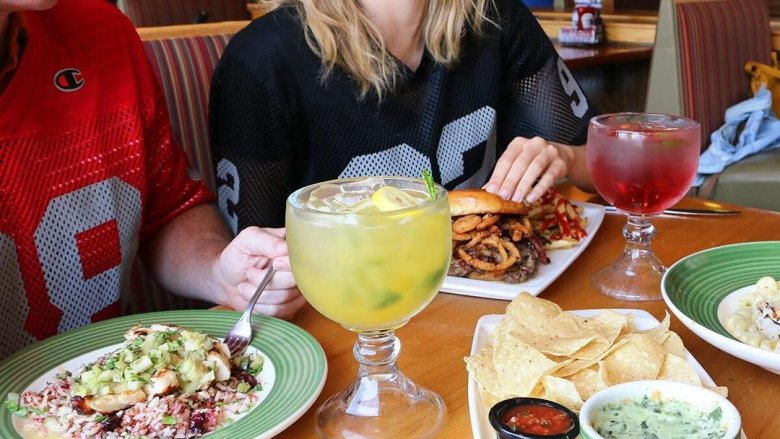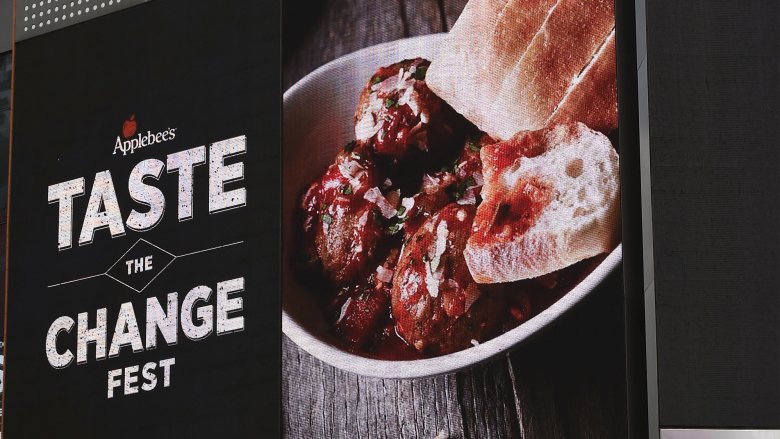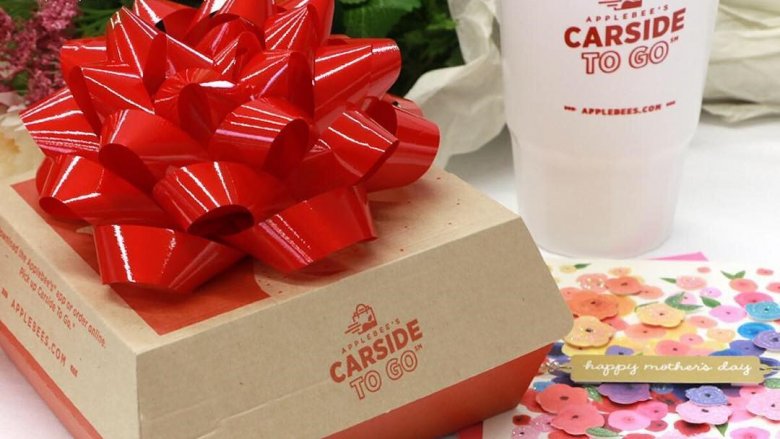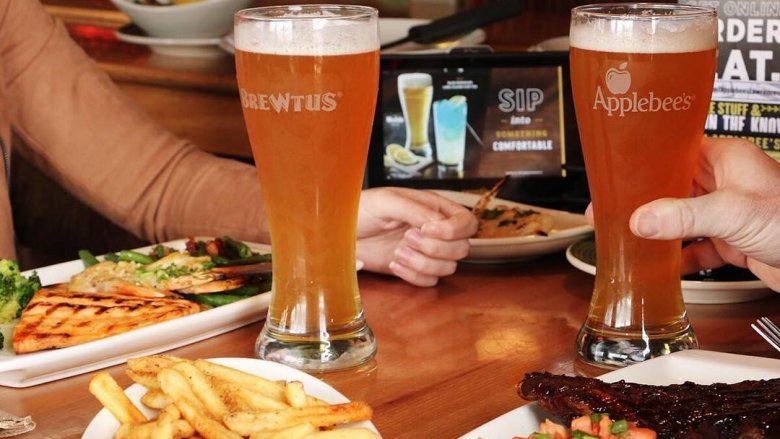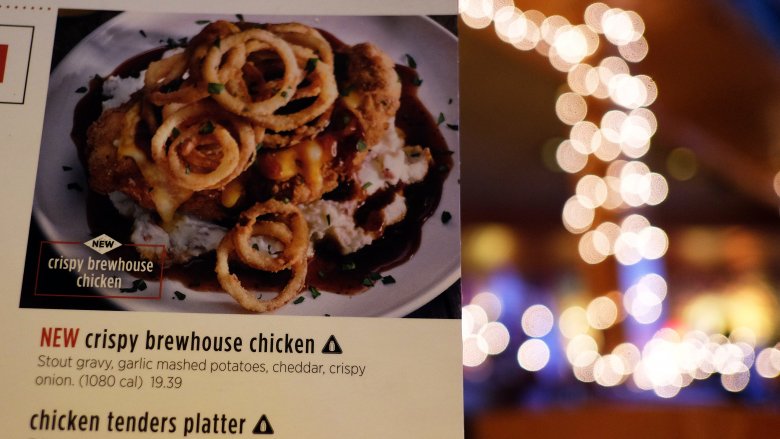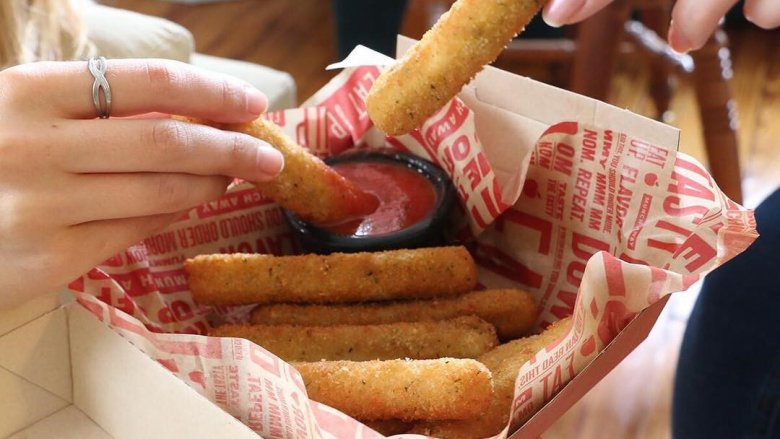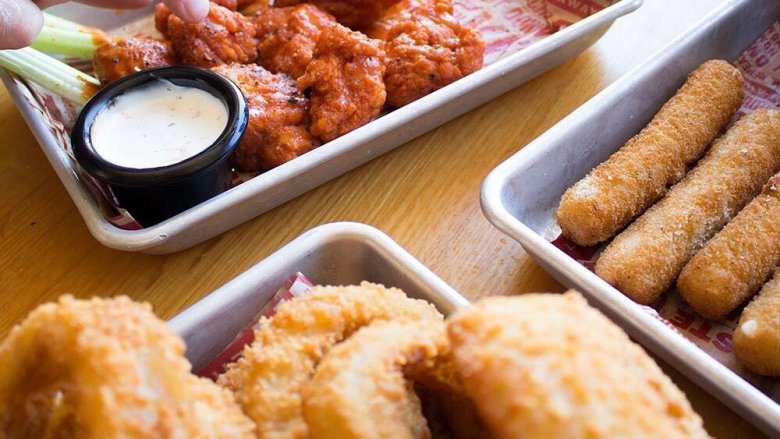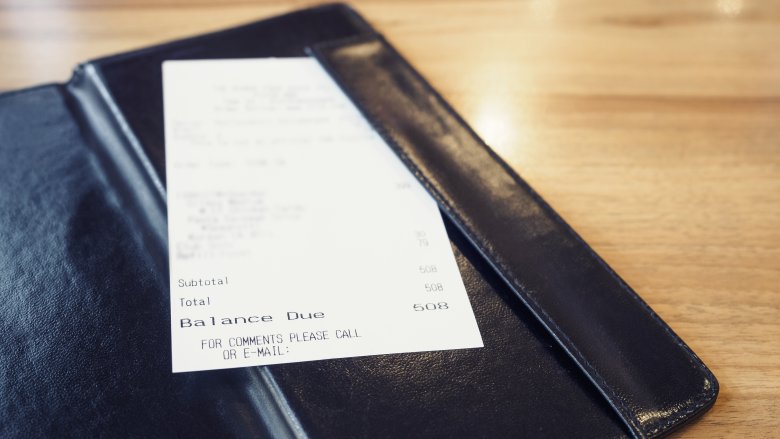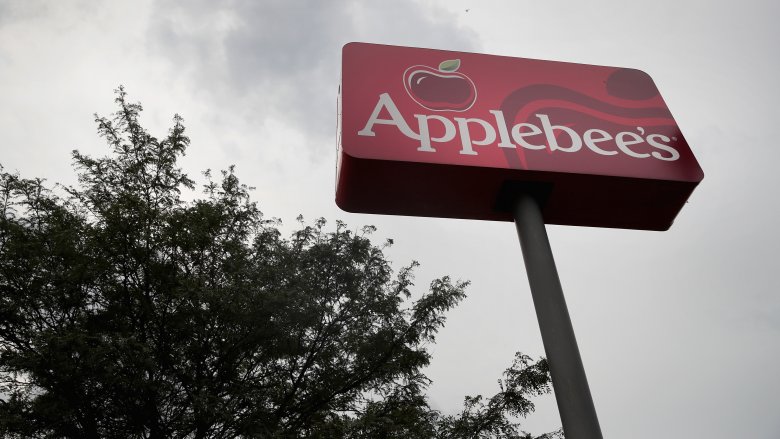The Real Reason Applebee's Is Struggling
Applebee's has been a staple of casual dining since they first opened their doors in 1980. Originally called TJ Applebee's Rx for Edibles and Elixirs, they became everyone's favorite Neighborhood Bar & Grill in 1986.
They grew massively over the 1990s, opening their 1,000th location in 1998. That's no small achievement, especially considering that in 1992, they only boasted 250 locations nationwide. The 20th century was Applebee's heyday, but times? They've changed.
The chain seemed to peak in the early 2000s, hitting 1,500 locations and expanding into international markets like Ecuador, Chile, and Jordan. They did a lot of things right, like add healthier options to their menu, and starting their Carside To Go service. But according to Business Insider, the number of Applebee's closing each year has been on the rise since 2016, and the chain still reports declining sales and continuing struggles. Hundreds of restaurants have closed, so what's going on with this one-time favorite hangout spot?
Millennials aren't impressed
It's no secret that the way the world is dining is changing. People are more health-conscious and more aware of where their food comes from, and thanks to millennials, dining styles are also changing. In 2016, Applebee's started what Business Insider called a "comprehensive business transformation", and it was designed to update the chain to make it more appealing to the new generation of diners.
Locations were redesigned, kitchens were overhauled, and anyone who hadn't been into Applebee's in a while would find a menu that looked completely different. In 2015, Huffington Post reported Applebee's would be rebranding as what they called a "millennial bar," and they added trendy new options like brisket nachos, sweet potato fries, platters to share, new cocktails, and three new menu categories: Shareables, Bar Snacks, and Pub Plates.
Widening appeal sounds like a great idea, but it completely failed to get millennials in the door. Even worse, the remodel cost franchisees millions, and that's not something that's easy to bounce back from.
They alienated core customers
When HuffPo reported on Applebee's new image in 2015, they noted there was one big thing missing from their new schtick: families. For years, families were Applebee's target market, and suddenly, they weren't.
It's a balancing act, and it's one Applebee's was very aware of. Brand president John Cywinski even remarked (via Fortune), "While we certainly hope to extend our reach, we can't alienate Boomers or Gen-Xers in the process."
But that's exactly what happened. By 2017, Applebee's executives were facing the brutal truth that not only had they failed to get millennials in the door, but they had changed so much their core customer base was suddenly no longer interested. Cywinski said (via QZ), "In my perspective, this pursuit led to decisions that created confusion among core guests, as Applebee's intentionally drifted from — what I'll call — its Middle America roots." That's a misstep that can break a business.
Casual dining as a whole is failing
The strangest thing of all is that Applebee's wasn't wrong about needing switch things up a bit in order to appeal to a new generation of diners. They're not alone in facing millennial-related difficulties, as Business Insider reports, other casual dining chains like Ruby Tuesday and TGI Fridays are facing the same seismic shift in trends.
There are a few things at work here, and part of it is that millennials tend to gravitate toward fast casual restaurants (think Chipotle and Five Guys) instead of more traditional casual dining places. They're also more likely to order delivery than previous generations, and with competitively-priced supermarkets and options like Blue Apron making meal delivery kits widely available, they're more likely to just cook at home.
TDn2K's Restaurant Industry Snapshot suggests (via Business Insider) another reason for the failing of casual dining, and that's simply the fact that there are just too many restaurants out there, and the market can't support them all.
They're late to embrace shifts in industry trends
In early 2018, the CEO of Applebee's parent company DineEquity Inc. spoke with the Los Angeles Times (via Phys.org). They were trying to fix both Applebee's and IHOP, and according to Stephen P. Joyce, most of their problems stemmed from the fact that they forgot what their customers were actually looking for.
Part of that is a more streamlined integration with technology, an industry trend they've been slow join. Joyce said they were going to be adding things like delivery options and ways to make ordering easier. Victor Fernandez, an analyst from industry tracker TDn2K, says there's another issue: mealtimes. More and more people are eating at strange hours, and want options that will allow them to eat their meals whenever their schedules dictate.
Applebee's is taking steps to make ordering and eating there more convenient, finally launching their own mobile apps and — believe it or not — finally installing WiFi in all their locations. Diners will be able to pay via their phones now, and that's been a long time coming.
The have weird views on technology
Applebee's is finally putting public WiFi in all of their locations in 2018, and that's important. It's not even a matter of the need to check Facebook every five minutes, either. Think business meetings over appetizers, coworkers grabbing lunch but still needing to check their email, parents out for a quick bite while waiting for the kids to message they're ready to be picked up. WiFi is a necessity in today's world, and Applebee's seems slow to catch on.
Back in 2014, Today reported that Applebee's applied for a trademark on "No tech Tuesday," which seemed to suggest they were considering implementing a policy of asking customers to put away their phones for a good, old-fashioned, face-to-face dining experience — at least for one day of the week. Attempts at getting more information on the plan failed, and while spokesman Dan Smith denied the chain was going to be asking people to keep their phones in their pockets, it's still a weird thing to even think about doing in today's world.
The food quality isn't great
It's impossible to flip through channels or scroll through social media without seeing pictures of food. Delicious, creative, healthy food. Applebee's hasn't really upped their game to try to compete in the 21st century's culinary landscape, and that's reflected in another part of today's social media-centric world: the online review.
Consumer Affairs says the Applebee's reviews they've collected give the chain a pretty sad 1.5 stars out of five. That's enough to turn people off from going right there, and that's just the start. Tripadvisor has a ton of Applebee's reviews, and even more disturbing are some of the photos uploaded to the site. Reviews are opinions, after all, but photos are proof — and The Detroit News points out there's not much on the Applebee's menu that looks great on Instagram.
Just take that photo of the Southwestern Steak Salad that went viral in late 2017 (via BuzzFeed). Sure, the menu photo looks great, but the actual dish doesn't measure up. Even Chili's hopped on the bandwagon to poke some fun at the photo, and that definitely doesn't help.
There's a lack of diversity
So, say you're on vacation. You're visiting somewhere that's on the other side of the country from home, and you're looking for some regional specialities to enjoy while you're out. The one place you're not going to go is Applebee's, and that's a problem.
The Detroit News suggests one more piece of the failure-puzzle is that Applebee's is too regimented. Every one has the same menu, and while consistency is a good thing, it can also be a huge downfall. There's no special menu that spotlights regional offerings, you're not going to find fresh seafood on the menu in Florida and Maryland and see that same menu spot filled with Creole dishes in New Orleans. And it's ironic, too, considering it's called the "Neighborhood Bar & Grill." Everyone always knows exactly what they're going to get on the menu, and that means there's absolutely no reason to go out of your way to try a new location.
They're not the healthiest
Every year, the Center for Science in the Public Interest hands out their Xtreme Eating Awards, and it's not really an award anyone would be proud to get. Applebee's was given the top spot in 2016 for their Build Your Sampler platter, and it's no wonder: there's no real way to make this one the least bit healthy, even if you split it between a table of people. It's customizable, sure, but the worst version of it is a platter heaped with 3,390 calories and a shocking 11,650 mg of sodium. (For reference, the American Heart Association recommends adults should strive for no more than 1,500 mg per day.)
Let's put it this way: even if you ordered the app and split it four ways, then ordered a main course, you're still essentially eating the equivalent of two full meals.
While there are some decent options at Applebee's, it's easy to fall into the trap of thinking you're making smart choices when you're really not. Take the Oriental Grilled Chicken Salad. Sounds healthy, right? You're downing 1,310 calories and 2,230 mg of sodium, so... not really.
They committed social media suicide
In 2013, Applebee's committed what News.com.au called "social media suicide," and defined their actions as a textbook example of how not to deal with a crisis in the digital world. It started when an Applebee's waitress posted a picture of a receipt with no tip and the sentiment, "I give God 10%, why do you get 18?" Not cool, but what really set off the chaos was Applebee's firing of the waitress. They claimed she had violated a line of her contract, but social media was having none of it.
An early morning post from the chain informed the denizens of the net that the guest had gotten a formal apology and the waitress had gotten "disciplinary action" for violating the customer's privacy... which Applebee's had done just a month before, when they posted a photo of another receipt and a patron's full name. Not surprisingly, they were called out on it.
In a matter of hours, the entire fiasco got more than 35,000 comments, most condemning Applebee's for their hypocrisy. Thousands of people were calling for a boycott of the chain, and none of this is good business.
There were allegations of harassment
Working in the restaurant business is tough, and in early 2018, news broke that accused Applebee's of making it even more difficult for women.
According to Vox, Applebee's and sister company IHOP have had more than 60 workers file sexual harassment lawsuits in federal courts, and that's only taking into account lawsuits between 2010 and 2018. Individual franchise owners were named in the lawsuits, brought by women who claimed to have been the victim of everything from lewd comments to threats they would be fired if they didn't comply with requests for sex.
Applebee's (and IHOP) released official statements attempting to distance themselves from the idea they promoted a toxic, abusive work environment, and Vox also points out that they're not the only ones to have these kinds of claims filed against them. But they also point out they're on the top of the pile, and that since most claims are privately dealt with by the US Equal Employment Opportunity Commission, it's impossible to tell how many people have actually come forward.
